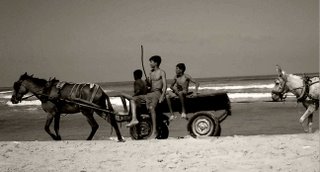The army's withdrawal from the Gaza Strip and dismantlement of the settlements resulted in appreciable improvement in the freedom of movement of Palestinians within the Strip, and much land was made available to the Palestinian Authority. Also, the Palestinian Authority was given control over the Rafah crossing, through which residents of the Gaza Strip holding Palestinian identity cards are free to cross to and from Egypt , provided the crossing is open, without Israel 's approval. However, Israel retained the power to compel the Palestinian Authority to close the Rafah crossing. Israel exercised this power following the abduction of Cpl. Gilad Shalit, on 26 June 2006.
Other than the improvement and benefit mentioned above, the disengagement did not lead to any improvement in the living conditions of the area's residents, and Israel continues to violate their rights by its various acts and omissions.
Israel 's frequent closing of the crossings between the Gaza Strip and the West Bank severely infringed the right of Gazans to work and to adequate living conditions. They also made it harder for Gazan exporters to compete and develop their businesses, and led to a significant drop in the availability of basic goods and medicines and to a sharp increase in their prices. Israel 's decision to drastically curtail the number of Gazans allowed to work in Israel left many families without a source of livelihood. As a result, forty percent of the work force in Gaza is unemployed. Israel froze, following the establishment of the Hamas government, the transfer to the PA of tax moneys it collected for it. This action prevents the payment of salaries to public employees and aggravates the already bad economic condition. Eighty percent of the residents of the Gaza Strip live under the poverty line.
The right to family life in the Gaza Strip, too, has not improved since disengagement. Families that are split, with some members, spouses included, living in the Gaza Strip and others in the West Bank, have suffered from prolonged separation as a result of Israel's absolute prohibition on Palestinian's traveling from the one area to the other, and the sweeping restrictions on crossing via Egypt and Jordan. In addition, the Knesset enacted a statute prohibiting family unification of Palestinians from the Occupied Territories with Israeli citizens and residents, and Israel does not allow its citizens and residents who are married to Gazans to enter the Strip to visit their families. "


